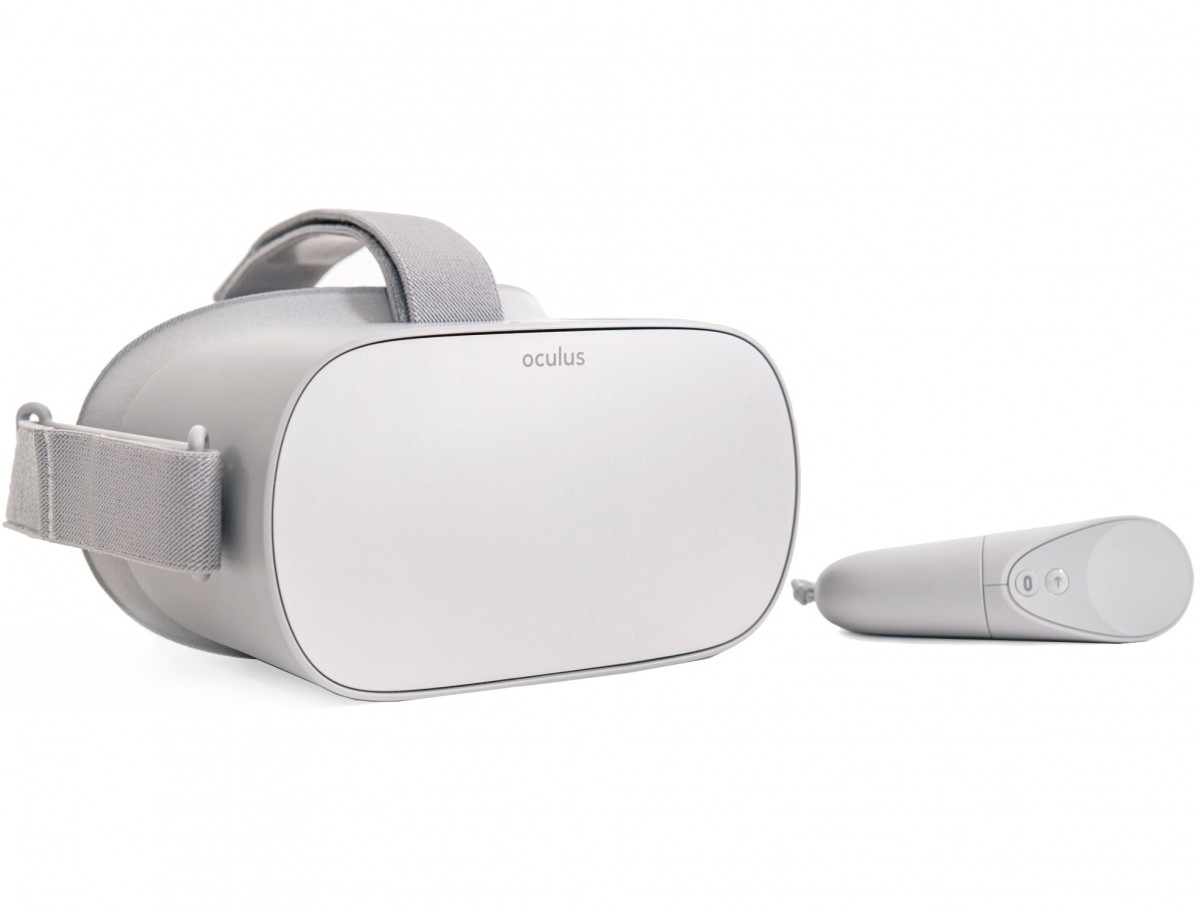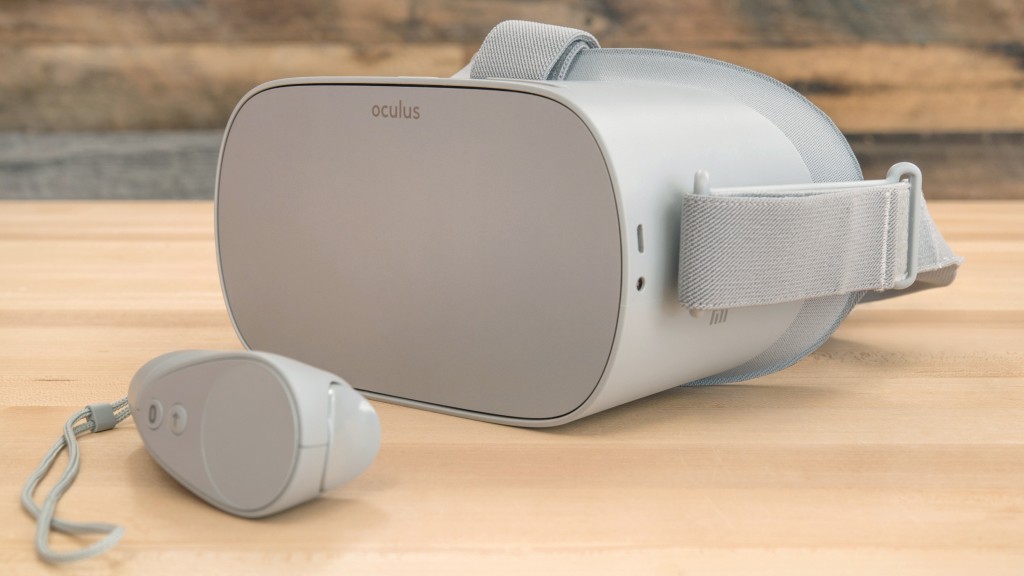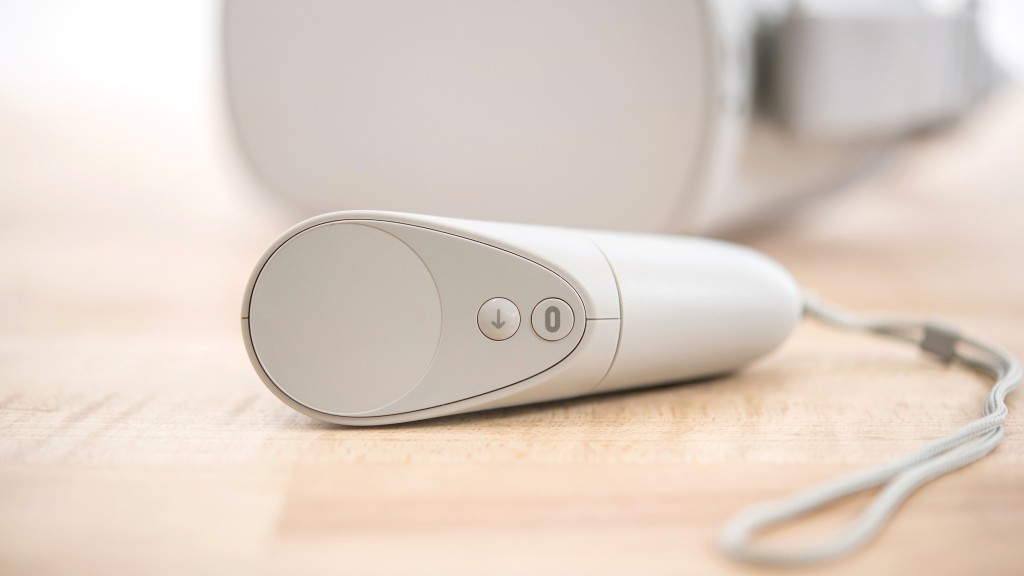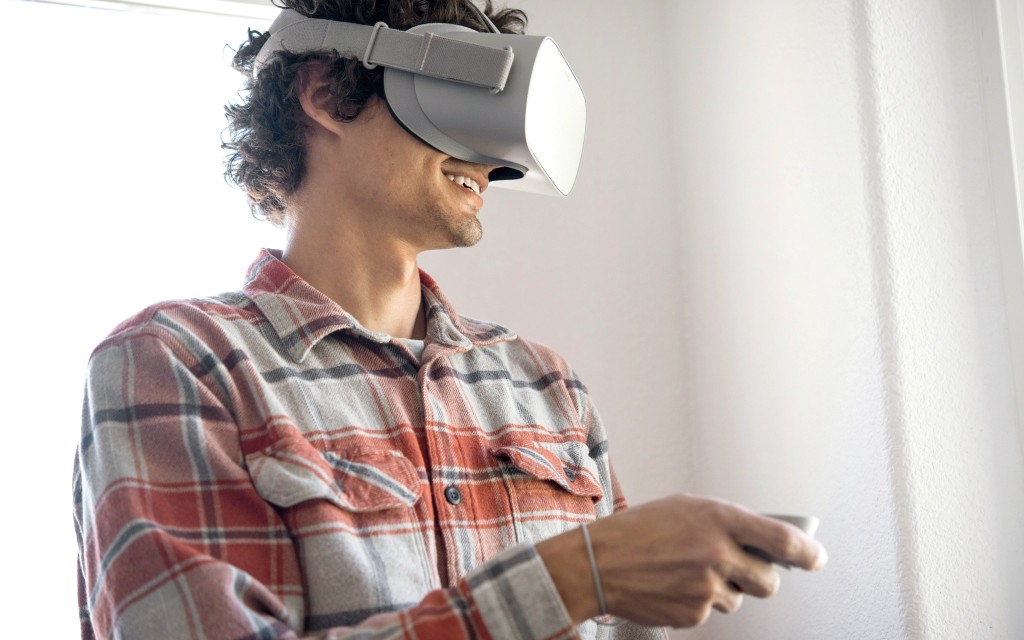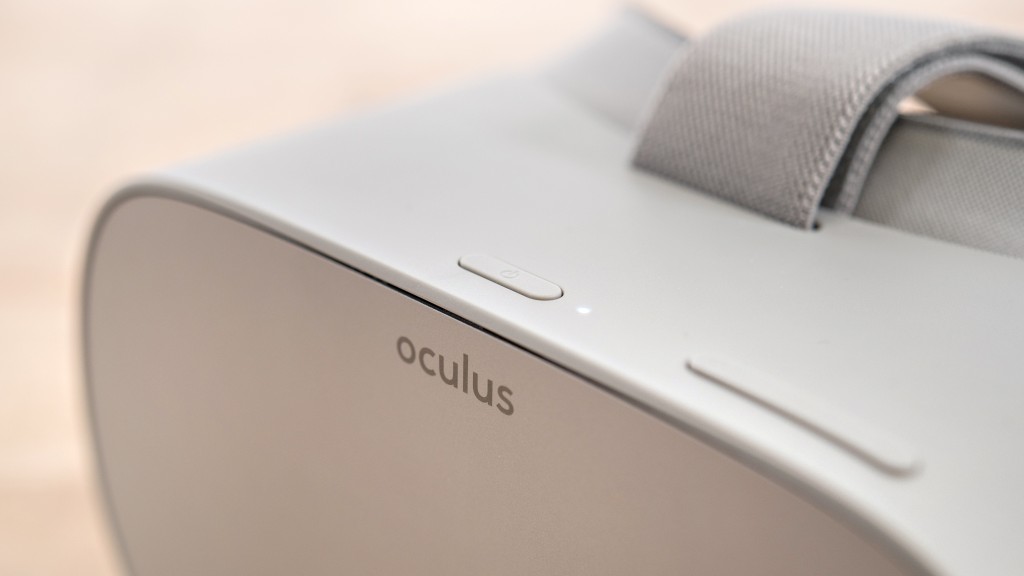Oculus Go Review
Our Verdict
Our Analysis and Test Results
The Go scores very near the top of the group, only really outperformed by the HTC Vive and the Oculus Rift. Both of these headsets cost at least double the price of the Go AND require a high-end gaming computer, usually in the neighborhood of at least $800.
Performance Comparison
To rank and score VR headset, we bought all of the latest and greatest headsets on the market today and compared their performance side-by-side. We looked at how easy to operate and set up each headset is, as well as how visually immersive and interactive of an experience each one provided. We divided up our various tests into five weighted rating metrics, with the Go's results outlined below.
Interactiveness
Being interactive is the most important measure of any VR headset, making this metric the most important and comprising the largest portion of the overall score at 35%. The Go delivered one of the best performances that we have seen to date from a mobile headset, earning it a respectable 6 out of 10.
This model of headset is a little limited when it comes to movement, as it does expect you to stay in a stationary position, either standing in the same spot or sitting in a swivel chair. You can look all about in every direction, but the Oculus Go isn't designed to be worn when moving. The VR experience won't register that you are walking around, making it very easy to walk into a wall or other object and hurt yourself.
Despite this minor limitation, the Go is otherwise highly interactive. The handheld remote has a touchpad with a button, trigger button, and both home and back keys.
We found the motion tracking on this remote to be highly accurate and required position resets much less frequently than some of the other headsets in the review.
In addition to the handheld remote, you can also pair a Bluetooth gaming controller to the Go.
Visual Immersiveness
Hand in hand with the level of interaction, being visually immersive is key for a headset providing a great VR experience. The Oculus Go delivered a great performance, earning an 8 out of 10 when it comes to providing a visually immersive experience in the VR realm.
We rated how well each headset blocked out ambient light, its resolution, the field of view, and the overall viewing quality to determine scores for the Go. The Go got off to a great start by blocking out the vast majority of the ambient light — for most people. We only noticed ambient light leaking in for our testers that had noses on the smaller side or that wore glasses when using the headset. Small amounts of light leaked in around the arms of the glasses regardless if we used the included glasses spacer or not, but we didn't find any light leakage to be overly distracting when using the Go in any case.
This Go has quite an expansive field of view, very comparable to the Samsung Gear VR's with the 5.5" screen having an overall resolution of 2560x1440. These combine to provide an all-around excellent viewing experience — for a mobile headset. The video is still not as clear or sharp as the tethered headsets, but it was more than clear enough for the majority of the games on the Oculus Go.
Comfort
After ranking and scoring each headset on how immersive and interactive of an experience they created, we looked at how comfortable it is to actually wear each one. As it is so easy for an uncomfortable headset to ruin a VR experience, this metric is responsible for 20% of the overall score as well. The Go is actually one of the more comfortable headsets to wear, earning it a 7 out of 10 for this metric.
The Go is quite comfortable on your face, even though it is one of the heavier headsets, weighing in at 16.6 oz. It is very evenly balanced, making its weight almost unnoticeable. There is plenty of padding around the headset where it contacts your head and there aren't any uncomfortable pressure points.
Unfortunately, there isn't a ton of room to wear glasses while wearing the headset, even when using the included glasses spacer. We also found that it was hard to keep the image totally clear when using this with glasses, as it appeared to be a bit out of focus and there was an increased amount of ambient light that was let in. However, you can actually order prescription lens for the Go, making this an attractive option if you require corrective lenses and use VR on a frequent basis.
Finally, we did notice that there isn't a ton of ventilation with this headset, meaning you face can get a bit sweaty after extended use.
User Friendliness
This metric, responsible for 15% of the total score, is where the Go truly shines. It is by far one of the most user-friendly VR headsets out there, earning it a 9 out of 10 — one of the top score in this metric.
We started off by looking at the sound options for each headset. There are two options on the Go: built-in speakers or a standard headphone port. We found the integrated speakers to be fine, but definitely didn't have the best sound quality. Regardless, it is very easy to hook up higher quality headphones if you find the sound quality to be wanting.
This is definitely one of the easiest headsets to use after the initial installation has been completed, only requiring you to put on the headset and adjust the straps before you are ready to go — substantially less fuss than all of the other mobile headsets that require you to insert your phone.
The Go has both power and volume buttons on the front of the headset that are very easy to reach and are quite difficult to accidentally press when using this VR headset.
Ease of Setup
For our final group of tests, we rated and scored the difficulty of the initial setup of each product, looking at both the hardware and software configurations, as well as what other hardware that isn't included in the box that is necessary to run the headset. The Go again did exceptionally well in this metric, earning a 9 out of 10 — one of the overall highest scores of entire group.
In terms of hardware, the Go is essentially ready to go right out of the box, with attaching a lanyard to the remote being the only task required. The software setup is also a breeze, with clear printed directions instructing you to install the app. The app has simple step-by-step directions to walk you through checking for updates and setting the initial configurations. After that, it's easy to pick out different games or other experiences, download them, and get right into VR. All in all, this process probably took less than 15 minutes to complete.
One of the major benefits to a standalone VR headset is the lack of required hardware needed — no gaming computers or top-of-the-line smartphone necessary. You can use pretty much any smartphone to complete the initial setup.
Value
All in all, the Go is an excellent value and a great option for an introductory VR headset. However, if you are shopping on a tight budget and already have a flagship smartphone that is compatible with the Gear VR or the Daydream View, then those might be a better option for saving $100.
Conclusion
In terms of an easy to use and convenient VR headset, you can't go wrong with the Oculus Go. It offers a solidly interactive and visually immersive VR experience and is definitely the VR headset for most people.


